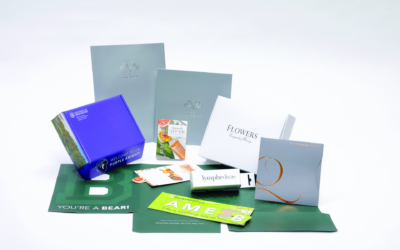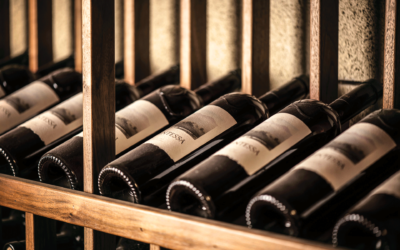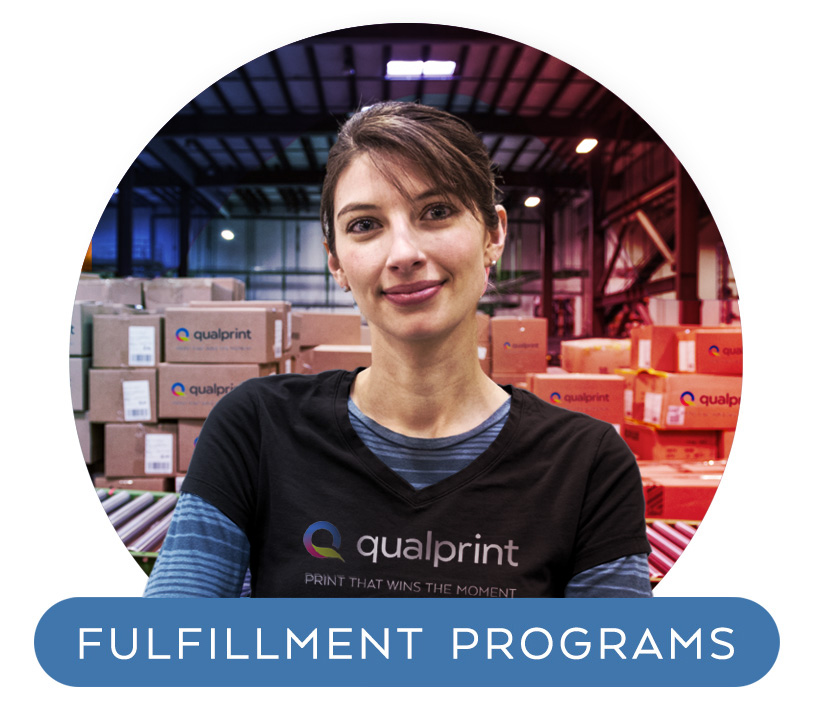Custom Folder Finishing Options
Branded folders offer an opportunity to engage your prospects, customers, members and students. Engagement is greatly increased with customization and advanced tactile and visual finishes that capture the recipient’s attention. When it comes to print finishing for folders, there are countless options to creatively apply. From unique coatings and varnishes to foil stamping, embossing, and more, the options are endless to WIN your moment! Folder finishing options (also known as post-print effects) are often used to add the final touches to your project, making them attractive and engaging.
In this article, we’re sharing some of the most widely used custom folder finishes to make your brand, organization, university or institution stand out from the competition and create a memorable experience between your brand and the recipient.
Special Print Coatings
Print coating for folders and other print media comes in different forms like UV and aqueous layers. To better explain these finishes and the looks that can be achieved we’ve gone into more detail below on each of them.
Aqueous coating uses a quick-drying, water-based sealant to protect your folder from smearing, smudging, scuffing, or showing fingerprints. It’s environmentally friendly and can last a very long time, but unfortunately it doesn’t provide resistance against water or other liquids.
Types of aqueous coating finishes that you can apply to your custom folders
- Gloss – A smooth coating with a shiny, reflective surface.
- Matte – This is “flat” and minimizes the folder’s reflectiveness while keeping all of the normal benefits of a protective coating.
- Satin – Gives the folder a velvet-like appearance and texture. Look being the key word.
- Soft-touch – A matte coating that also gives your folder a soft, suede-like feel when touched.
With UV (ultraviolet) coating, your folder is covered in glossy, reflective liquid which is then cured with ultraviolet light, making it dry quickly and creating a shiny, dramatic look. The UV density in this finishing process can be adjusted to create a simple accent in a key image area, or a thicker density layer may be used to produce a premium ‘3D’ look and feel. Tire treads come to life on a page. Carbon fiber can be made to FEEL like carbon fiber. Accents can even be applied to human hair in a magazine, making the image almost ‘jump off the page’. The impact of UV is hard to beat.
Flood and Spot Varnish
Flood varnish is the covering of the entire piece to protect it and apply a high-gloss, satin or matte finish. Spot varnishing is an effect used to add accents to specific areas of a printed piece. For example, you could use spot varnish to make a headline or image pop off the cover of the folder, or you can add the desired finish (gloss, matte, or satin) to the folder’s entire surface.
An added benefit to this folder finishing technique is that it doesn’t add extra weight to the folder itself and keeps smudges, fingerprints, and scratches off your finished product.
Listed here are the types of varnish finishes you can add to your custom folder
Gloss Varnish
This is a type of varnish that reflects light. Because of its ability to make photos brighter and more vivid, it is most commonly used in brochures and flyers.
Matte Varnish
This is a smooth and non-glossy type of finish. It is commonly used to soften the appearance of images on folders.
Silk Varnish
Silk varnishing lands in between matte and gloss. For those who like a nice balance, this option would be a perfect choice of “not too shiny” and “not too flat”.
Machine Sealing
This does not make any visible difference to a finished folder. Its main use is to seal the ink with a protective layer with the goal of protecting the coloring and design.
Folder Lamination
One of the best ways to protect and preserve your custom folders is by having them laminated. This process adds a very thin protective layer to your prints, making your folders water and tear resistant. Laminate in most cases comes in either a glossy or matte finish. While other folder finishing techniques have more options, lamination is extremely good at protecting the final product better than the others.
This method also makes the images on your prints look sharper to create eye-catching effects like applying different levels of gloss and even textures can be created such as a velvet or canvas look when using the matte finishing effect.
Folder Die-Cutting
If you like the look of rounded corners, unusual shapes or cut-outs, this is the type of finish you need for your custom folders. Die cutting comes in many shapes and forms and is generally used to create custom shapes, designs, reveals or effects. This method works much like a pastry-cutter does by punching out shapes from the folders using sharp forms called dies.
Brands love to use die-cutting on folders to create layered reveals using their logo, other organizations will cut patterns to add detail that gives the folder a custom feel when needing to create a more premium experience.
Regardless of your reasoning, die-cutting folders can be a beneficial tool for engaging your audience and driving awareness, recall and action.
Foil Stamping
This method is done by applying heat to fuse foil onto a printed folder that highlights a specific area such as your logo or an image, adding shimmer, shine, texture and a 3D effect. It gives a unique and sophisticated look to folders that utilize this finishing technique and is perfect for building a high end image for your brand.
Coincidentally foil stamping also requires a die and is usually used for custom folder projects that require a more premium end product. But you also have the ability to use a foil fusing finishing process that is digital and can generate a similar foil stamping look without the need to create a custom die, which can sometimes be costly.
Embossing and Debossing Services
Embossing (and debossing) adds a new dimension to your folders and is an effective way to create a unique experience for your prospects, customers, clients, students or members. This folder finishing technique can be used to call attention to a specific embellishment, design or brand element such as your logo, seal or award emblem. These effects are created using a plate that is either raising the surface of the folder or depressing the design into the folder.
The great thing about using a debossing or embossing process in the design of your custom folder is that there are no rules. You have the freedom to create and design using this finishing technique however you see fit. The end result is a unique folder that will provide the feeling and experience you are wanting to create for the individual you are giving it to.
Again, custom folders are a great way to get your message and brand into the hands of customers, members, clients or students and the more attention you’ve put into the details, especially when it comes to the finishing of that folder, the more memorable and engaging you will be.
Contact us now
For more information and if you need assistance with printing and print marketing
Phone: (413) 442-4166
Blog Form
+ More Articles
Special Finishes Articles
More stories from Qualprint…
Die-Cut Print Options & Die-Cut Examples
Die-Cutting in the print industry provides you with a creative way to differentiate yourself across the medium as well as enables a...
Top Ways to Improve Customer Experience at a Winery
Many customers who’ve visited a winery have felt something was missing in their experience? In an industry where every detail matters,...
Custom Printing for Marketing Agencies
Print remains an indispensable tool, partly because 75% of buyers find printed material to be more trustworthy than other types of...






